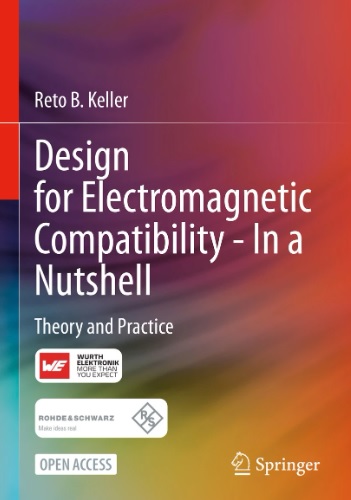31st October 2023
Electromagnetic Compatibility (EMC)
EMC is defined as the ability of devices and systems to operate in their electromagnetic environment without impairing their functions and without faults and vice versa. EMC ensures that operation does not influence the electromagnetic environment to the extent that the functions of other devices and systems are adversely affected. https://www.electronics-notes.com/articles/analogue_circuits/emc-emi-electromagnetic-interference-compatibility/what-is-emc-basics-tutorial.php#
Electromagnetic Interference (EMI)
Electromagnetic interference” (EMI) is defined as the “degradation in the performance of equipment or transmission channel or a system caused by an electromagnetic disturbance” (IEV 161-01-06)
A common example of EMI is when a cell phone is placed near powered audio equipment or speakers, and it causes a noise or series of beeps to be heard. https://www.techtarget.com/searchmobilecomputing/definition/electromagnetic-interference
“Design for Electromagnetic Compatibility–In a Nutshell”

Electromagnetic compatibility is a topic that is becoming more and more important in our modern and high-tech society. EMC no longer just helps to ensure that the television screen does not flicker when the vacuum cleaner is running.EMC is important because interference and disturbances of electrical equipment can seriously harm people, infrastructure, and the environment. For example, in 1992, a woman died because the heart machine of the ambulance shut down every time the technicians turned on their radio transmitter to ask for advice [12]. Another example is the explosion of the Texaco refinery in Milford Haven UK, on the 24th of July 1994, which was caused by an electrical storm giving rise to power surges which tripped out a number of pump motors while leaving others running. The explosion led to 26 people being injured and damage of £48 million [12].
Source: Design for Electromagnetic Compatibility–In a Nutshell (open access book). https://link.springer.com/book/10.1007/978-3-031-14186-7 DOI: https://doi.org/10.1007/978-3-031-14186-7
(2014) EMI Problems between AM Transmitters and Cranes
Electromagnetic fields from two high-power AM transmitters close to a construction site induced dangerously high voltages in crane booms, damaging equipment and injuring workers. The source of the interference was quickly identified: two AM transmitters located approximately 230 meters from the construction site. The antennas operated at 100 kW and the maximum radiation direction from the antennas was directed towards the construction site.
Citation: M. B. Perotoni and R. M. Barreto, Resolving Safety-Critical EMI Problems between AM Transmitters and Cranes Using a 3D Field Solver, High Frequency Electronics, 2014.
EMC Standards
There are global EMC standards set by agencies such as the International Electrotechnical Commission (IEC) or the Institute of Electrical and Electronics Engineers (IEEE). Some countries have their own standards set by national agencies such as the VDE in Germany, BIS in India, the Canadian Standards Association in Canada, and the FCC in the USA.
The (EMC) Directive 2014/30/EU limits electromagnetic emissions from equipment to ensure that, when used as intended, such equipment does not disturb radio and telecommunication, as well as other equipment. The directive also governs the immunity of such equipment to interference and seeks to ensure that this equipment is not disturbed by radio emissions, when used as intended.
The main objectives of the directives are to regulate the compatibility of equipment regarding EMC
- equipment (apparatus and fixed installations) needs to comply with EMC requirements when it is placed on the market and/or taken into service
- the application of good engineering practice is required for fixed installations, with the possibility that competent authorities of EU countries may impose measures in instances of non-compliance
The challenges of EMC in the all-electric society
Bettina Funk, Technical Expert at SEK Svensk Elstandard, the IEC Swedish National Committee, a member of the IEC Standardization Management Board (SMB) and the Chair of CISPR, the International Special Committee on Radio Interference) explains the considerable challenges ahead for electro-magnetic compatibility (EMC) standards.
Some of the current limits were agreed upon decades ago and some are no longer fit for purpose as we move towards an all-electric and especially an all-connected society.
She gives an example of the changing electromagnetic environment; we now have solar panels on roofs mushrooming everywhere, even off-grid, some of which include or are connected to inverters. Those need to be EM compatible with all the other electronic devices that are already on the same roof, sometimes less than a metre away. In the 1970s, we often needed to protect analogue terrestrial TV, while we now have a multitude of radio services on or underneath the roof that need to work without performance degradation.
https://etech.iec.ch/issue/2023-04/the-challenges-of-emc-in-the-all-electric-society
“EMC specifications taking into account 5G technologies” – ITU: Electromagnetic compatibility (EMC) aspects in ICT environment
The electromagnetic environment is changing rapidly through the development and installation of new types of electric/electronic equipment and evolving the telecommunication infrastructure. Examples include deployment of products with higher clock frequencies, deployment of new radio systems and use of wireless power transmission (WPT) systems with high power radio frequency current which changes the electromagnetic environment. Focus will also be addressed to electromagnetic aspects for the green growth deployment of ICT.
The philosophy of EMC standard specified the protection of radio services used in close environments. Instead, in the future it needs to address the deployment of high density of radio devices in the same environment and this will increase the mutual-interference and intermodulation cases.
https://www.itu.int/en/ITU-T/studygroups/2017-2020/05/Pages/q4.aspx
An up-to-date status of work under this Question is contained in the ITU-T SG5 work programme
https://www.itu.int/ITU-T/workprog/wp_search.aspx?q=4/5
Utilization of 5G Technologies in IoT Applications: Current Limitations by Interference and Network Optimization Difficulties—A Review https://www.mdpi.com/1424-8220/23/8/3876
5G applications include autonomous vehicles, remote surgery, and virtual and augmented reality, and these require high bandwidth, low latency, and reliable connectivity. However, there are challenges associated with 5G networks, such as interference and network optimization difficulties. The coexistence of 5G networks and IoT applications is a concern, and optimization challenges in 5G networks need to be addressed to enable efficient and effective implementation. Interference in 5G networks can occur due to a variety of factors such as environmental conditions, radio frequency congestion, and the deployment of too many access points in a limited area.
Interference in 5G networks can have a significant impact on IoT devices that rely on a stable and reliable connection to operate effectively.
Another critical aspect of interference in 5G networks is the potential for security breaches. As the number of connected devices increases, the risk of cyber attacks also grows. Interference in 5G networks can make it easier for hackers to gain unauthorized access to IoT devices and the data they transmit. This can have serious consequences, particularly for devices that are used in critical infrastructure, such as healthcare systems, power grids, and transportation networks.
To mitigate the impact of interference in 5G networks on IoT devices, it is essential to ensure that the network is properly configured and managed. This includes deploying access points strategically to minimize congestion, using directional antennas to focus signals and reduce interference, and implementing security measures to prevent unauthorized access. In addition, new technologies such as edge computing and network slicing can help to reduce latency and improve the reliability of IoT device communication.
Figure 10. Challenges of 5G networks
Table 13. Interference characteristics in 5G networks and IoT services
Citation: Pons, M.; Valenzuela, E.; Rodríguez, B.; Nolazco-Flores, J.A.; Del-Valle-Soto, C. Utilization of 5G Technologies in IoT Applications: Current Limitations by Interference and Network Optimization Difficulties—A Review. Sensors 2023, 23, 3876. https://doi.org/10.3390/s23083876
Renewable Energy

Renewable Energy; Microgrids and EMI
A microgrid can be thought of as a small ‘subset’ of the electricity grid that provides energy generation and storage at a local level. They can incorporate renewable energy generation (for example, from solar panels or wind turbines) as well as battery energy storage and electric vehicles.
Microgrids are very complicated power systems and are often affected by electromagnetic interference (EMI) which is non-negligible in renewable energy integrated power systems. Radiofrequency emissions emanate from microgrids to the external environment and impact nearby communication devices and radio receivers. System components in microgrids can also be affected by EMI. The renewable energy power system is the source as well as the victim of EMI.
Microgrids and telecommunication systems
Electromagnetic interference and renewable energy microgrids have an unavoidable impact on telecommunication systems. The influence of radiofrequency emissions from microgrids can not be ignored when designing a telecommunication system in its vicinity and vice versa.
Microgrids: A review, outstanding issues and future trends
https://vbn.aau.dk/en/publications/microgrids-a-review-outstanding-issues-and-future-trends
7.4. Regulatory challenges
Standards need to be reviewed: MG is a relatively new industry. Standards and protocols for micro source integration and participation in traditional and deregulated power markets, as well as recommendations for safety and protection, should be developed. To properly combine MGs with active distribution networks, standards such as G59/1 and IEEE 1547 should be reviewed and restructured. Also, research is needed to review IEEE 2030.7-2017– IEEE Standard for the Specification of Microgrid Controllers.
Administrative and legal barrier: In most countries, there is no standard legislation or regulation that regulates the operation of MGs. Some governments are promoting the development of green electricity MGs, although standard regulations have yet to be drafted for future implementation.
Citation: Uddin, M., Mo, H., Dong, D., Elsawah, S., Zhu, J., & Guerrero, J. M. (2023). Microgrids: A review, outstanding issues and future trends. Energy Strategy Reviews, 49, [101127]. https://doi.org/10.1016/j.esr.2023.101127
Karpowerships
Karpowerships are floating power plants that generate electricity. Compliance with EMC and EMI requirements is essential for ensuring the safe and reliable operation of Karpowerships, as any interference or malfunction can have serious consequences. Karpowership operators and manufacturers must work closely with regulatory authorities and follow best practices to address these challenges effectively.
FCC permits very low power device operations in 6 GHz band
The Federal Communications Commission recently opened the 6 GHz band to a new class of very low power devices that will operate alongside other WiFi-enabled devices. The new rules however are careful to limit these devices to very low power levels and subject them to other technical and operational requirements that will permit these devices to operate across the United States while protecting incumbent licensed services that operate in the 6 GHz band.The Commission also proposed expanding operation of these very low power unlicensed devices to the remainder of the 6 GHz band and permitting VLP devices more operational flexibility through higher power levels subject to a geofencing system that provides interference protection to licensed incumbent operations in the band. https://docs.fcc.gov/public/attachments/DOC-397829A1.pdf
Energy meters

Beyond the Noise: Maintaining Accuracy with EMC in Energy Metering
Electromagnetic Compatibility (EMC) is a critical aspect of designing and manufacturing energy meters. As these devices are responsible for accurately measuring and monitoring energy consumption, it is crucial that they function properly and do not interfere with other electronic devices. This article provides an overview of the EMC requirements outlined in IEC standard IEC62052 https://clouglobal.com/beyond-the-noise-maintaining-accuracy-with-emc-in-energy-metering/
Electromagnetic interference on static electricity meters running backwards
An interference case in a household situation resulting in a perceived power generation by a smart meter. This perceived power generation has occurred in a house in the Netherlands with no power generating equipment such as solar panels, wind mills or any other. https://www.utwente.nl/en/eemcs/pe/3.research/past/static_electricity-meters/
6G
Evolution of Wireless Communication to 6G: Potential Applications and Research Directions https://www.mdpi.com/2071-1050/14/10/6356
7.9. Electromagnetic Compatibility
We should note that 6G is anticipated to use frequencies higher than 100 GHz [82]; 6G foresees a large number of varied devices connected through the wireless medium. This huge number of diverse nature-interconnected devices will require higher data rates as stated above. This however would result in an “overburdened and overloaded electromagnetic (EM) spectrum”.
In 6G, the problem of capability of wireless communication network requires a solution and mechanism, which, at the same time, sense and communicate through EM spectrum. Heterogeneity of devices calls for EMI compatibility. The requirements of EMI compatibility in B5G are also being explored by the researchers. B5G radio requirements call for a dynamic solution for spectrum sensing for sending and receiving RF signals to THZ bands. A transformation mechanism is needed [16,83], whereby the diverse devices can interact and share spectrum EM “dynamic sensing” and “multiband communication” for collocated devices [83]. The higher “bandwidth”, “frequencies” and “co-location densities” have been considered challenging, which require devising mechanisms. The possible concerns as a result of EMC, with respect to the 6G KPI for collocated devices, may include (i) collocated devices having greater densities, demanding EM environments, (ii) the addition of more autonomous and flying objects may create unpredictability for collocated devices, (iii) radiated properties of new frequencies, (iv) VR glassed and body implants having sensors, and (v) integration of “3CLS” etc. [84]
Citation: Asghar, M.Z.; Memon, S.A.; Hämäläinen, J. Evolution of Wireless Communication to 6G: Potential Applications and Research Directions. Sustainability 2022, 14, 6356. https://doi.org/10.3390/su14106356
EMC challenges with 6G https://ieeexplore.ieee.org/document/9901285
Abstract:
The development of mobile technologies is going on for 5G. At the same time, research has already started for the future 6G development. This research is in its initial stage and no agreements about key technical parameters and standards have yet been done. However, suggestions on general principals and goals have been published from different actors. It is therefore interesting to see how these visions will affect the area of Electromagnetic Compatibility (EMC) in a larger sense. In this paper, some of the current thoughts about 6G will be summarized as well as an analysis about possible impact on the area of EMC. The challenges that emerge as a result of the mass increase of wirelessly consumer devices, dense co-located, working in new frequency bands and in scenarios characterized by being highly dynamic, flexible and non-predictable, will be complex and will require new EMC equipment, theoretical models and methodologies for EMC analysis and testing to be developed. In this paper, numerical results from some dense co-location scenarios are presented to show examples of interference challenges to be handled. The overall conclusion is that if present expected technical parameters for 6G will become true, this will lead to a need for a large development step within the EMC area.
Citation: K. Wiklundh and P. Stenumgaard, “EMC challenges with 6G,” 2022 International Symposium on Electromagnetic Compatibility – EMC Europe, Gothenburg, Sweden, 2022, pp. 19-24, doi: 10.1109/EMCEurope51680.2022.9901285. https://ieeexplore.ieee.org/document/9901285
Medical devices – EMI

Electromagnetic interference (EMI) can affect several types of medical devices that have electrical or electronic systems. Examples of devices that can be affected include:
- pacemakers or defibrillators – implanted or external
- implanted neurostimulators
- programmable hydrocephalus shunts
- cochlear implants
- ECG monitors
- infusion pumps
Manufacturers of medical devices are required to minimise the risk that their device can cause, or be affected by, EMI. Where the risk is not eliminated, the manufacturer must include information about the residual risk in the instructions for use. https://www.gov.uk/government/publications/electromagnetic-interference-sources/electromagnetic-interference-sources
Interference by Modern Smartphones and Accessories with Cardiac Pacemakers and Defibrillators https://link.springer.com/article/10.1007/s11886-022-01653-0
Smartphones, smartwatches, wireless headphones, and accessories use is growing rapidly in the USA. Newer generation of these devices are incorporating increasing amounts of magnets for various purposes such as optimization of wireless inductive charging, attachment of accessories, and convenience functionalities. These magnets have the potential to cause CIEDs to revert into magnet mode, only if in close contact and properly aligned. Magnet reversion mode in pacemakers will lead to temporary asynchronous pacing and in ICDs will transiently disable tachytherapies. If smartphones and their accessories are maintained at 6 inches distance from the CIED then the risk of inadvertent induction of magnet mode in a CIED is extremely unlikely. Citation: Nadeem, F., Tran, C.T., Torbey, E. et al. Interference by Modern Smartphones and Accessories with Cardiac Pacemakers and Defibrillators. Curr Cardiol Rep24, 347–353 (2022). https://doi.org/10.1007/s11886-022-01653-0
The complexities and challenges of EMC and EMI in our modern and hyper connected world are ever increasing and standards will have to keep up. Compliance will have to be closely monitored by regulatory authorities in order to ensure public safety.
